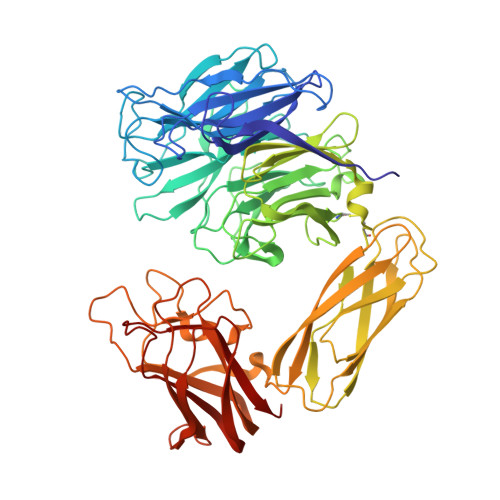Two Nucleophilic Mutants of the Micromonospora Viridifaciens Sialidase Operate with Retention of Configuration by Two Different Mechanisms.
Watson, J.N., Newstead, S., Narine, A.A., Taylor, G., Bennet, A.J.(2005) Chembiochem 6: 1439
- PubMed: 16206228
- DOI: https://doi.org/10.1002/cbic.200500114
- Primary Citation of Related Structures:
1WCQ - PubMed Abstract:
Mutants of the Micromonospora viridifaciens sialidase, Y370E and Y370F, are catalytically active retaining enzymes that operate by different mechanisms. Previous substitutions with smaller amino acids, including Y370D, yielded inverting sialidases. At least one water molecule can fit into the active-site cavity of this mutant and act as a nucleophile from the face opposite the leaving group (Biochemistry 2003, 42, 12 682). Thus, addition of a CH(2) unit (Asp versus Glu) changes the mechanism from inversion back to retention of configuration. Based on Br?nsted beta(lg) values, it is proposed that the Y370E mutant reacts by a double-displacement mechanism (beta(lg) on k(cat)/K(m) -0.36+/-0.04) with Glu370 acting as the nucleophile. However, the Y370F mutant (beta(lg) on k(cat)/K(m) -0.79+/-0.12) reacts via a dissociative transition state. The crystal structure of the Y370F mutant complexed with 2-deoxy-2,3-dehydro-N-acetylneuraminic acid shows no significant active-site perturbation relative to the wild-type enzyme.
Organizational Affiliation:
Department of Chemistry, Simon Fraser University, University Drive, Burnaby, BC, Canada.



















